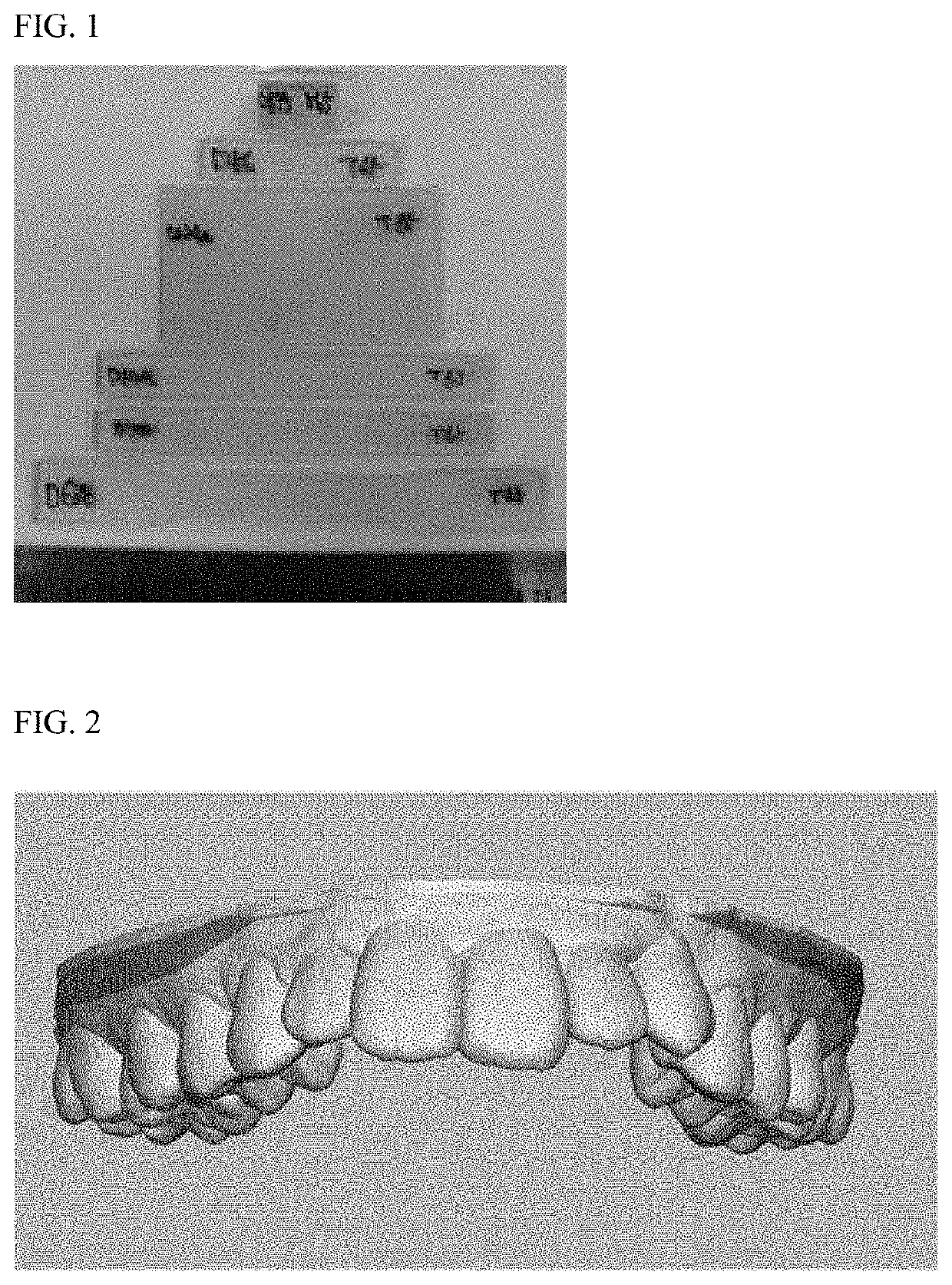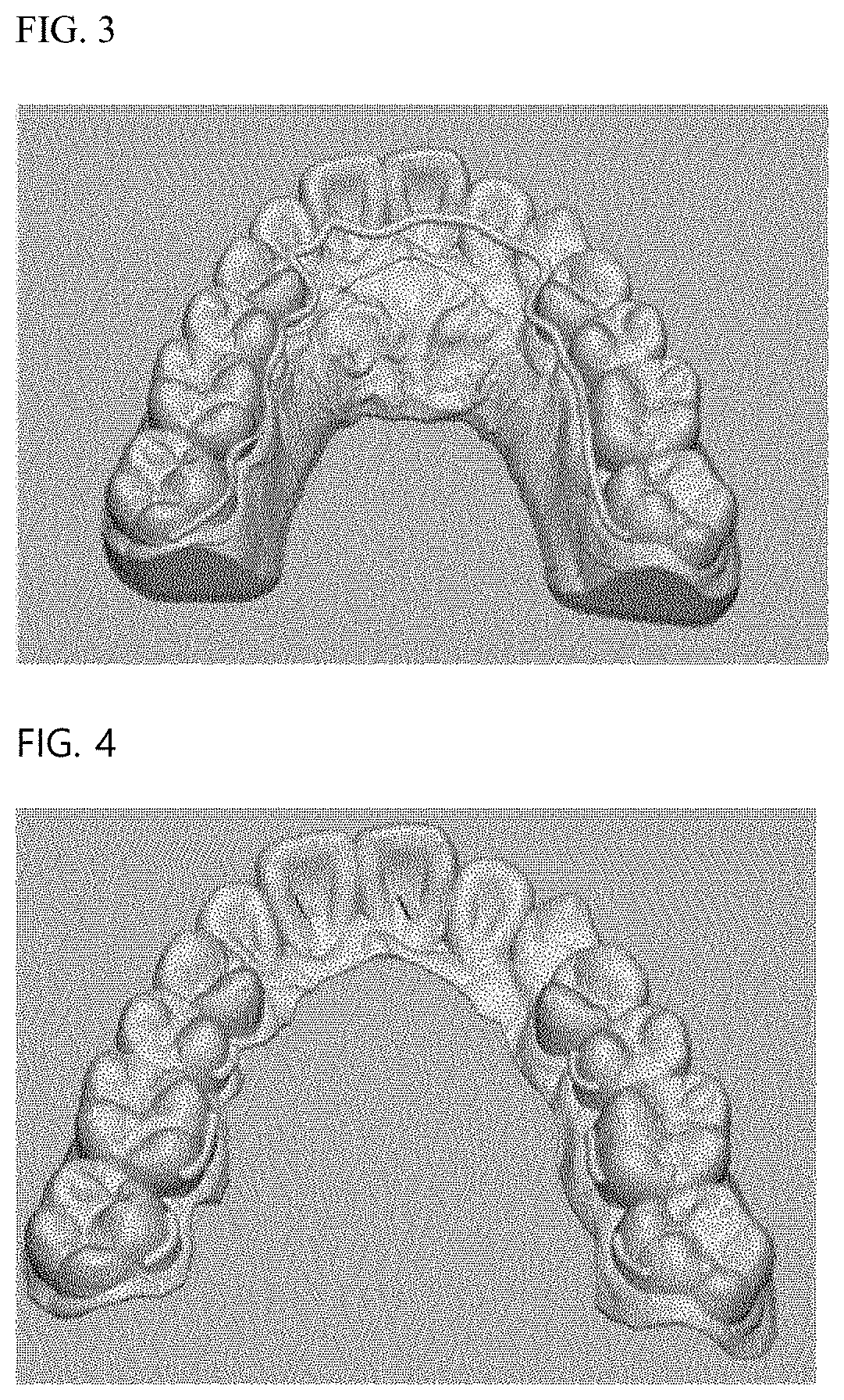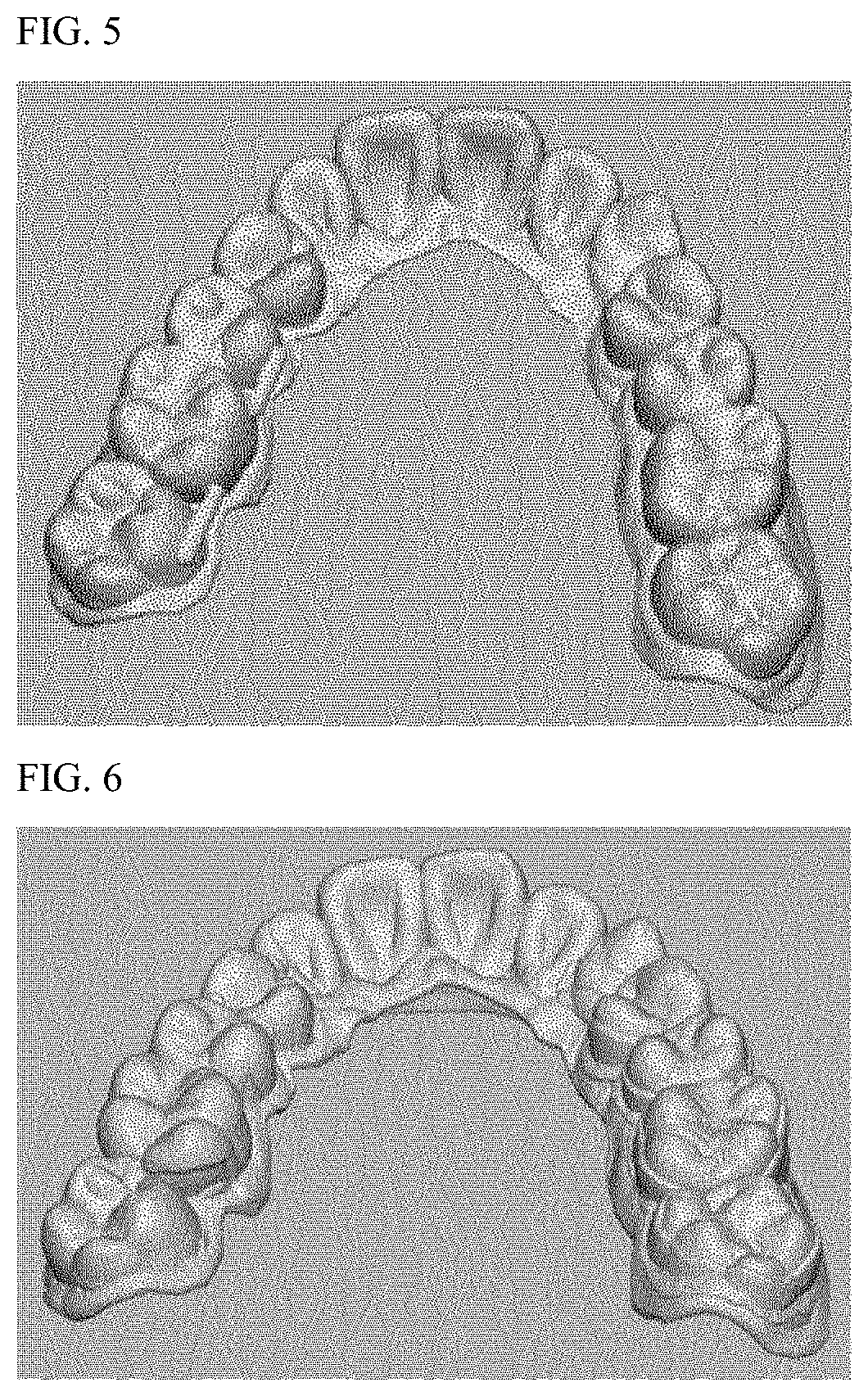Photocurable composition for 3D printer for producing transparent orthodontic device
a 3d printer and composition technology, applied in the field of 3d printing for producing a transparent orthodontic device, can solve the problems of inability to closely fit the transparent orthodontic device patient pain is considerable, and the orthodontic device is not close to the dental structure, so as to enhance the orthodontic effect, reduce the pain of patients, and improve the effect of orthodontic
- Summary
- Abstract
- Description
- Claims
- Application Information
AI Technical Summary
Benefits of technology
Problems solved by technology
Method used
Image
Examples
preparation example
ocurable Polymer Composition for 3D Printing
[0100]A photocurable polymer composition for 3D printing was prepared by mixing a UV-curable polyurethane oligomer represented by the following Formula 6 or Formula 7; a photoinitiator represented by the following Formula 5; 3-methacryloxypropyltrimethoxysilane; an epoxy acrylate oligomer; and 2,6-di-tert-butyl-p-cresol. The oligomer, etc. used in the preparation of the polymer composition, were purchased, and the contents of the components are shown in Table 1 below.
[0101]wherein
[0102]A and A′ are each a substituent represented by Formula 2, and
[0103]n′, m′, o′, p′, q′, and r′ are the same as or different from each other, and are each independently an integer of 1 to 100.
TABLE 1S10S20S30S40S50S60S70S80Formula 6100100100100100100——Formula 7——————100100Photo-11.551015201015initiatorSilance0.050.10.511.5211.5couplingagentOligomer1015253045503045Stabilizer0.050.10.512312(unit: parts by weight)
experimental example
ation of Physical Properties
[0104]1. Test conditions
[0105]1-1. Tensile Test
[0106]Test method: ASTM D638
[0107]Testing instrument: Universal Testing Machine
[0108]Test speed: 50 mm / min
[0109]Distance between grips: 115 mm
[0110]Load cell: 3,000 N
[0111]Elasticity range: (0.05˜0.25)%
[0112]Yield point: 0.2% offset
[0113]Test environment: (23±2)° C., (50±5)% R.H.
[0114]1-2. Flexural Test
[0115]Test method: ASTM D790
[0116]Testing instrument: Universal Testing Machine
[0117]Test speed: 1.4 mm / min
[0118]Distance between spans: 55 mm
[0119]Load cell: 200 N
[0120]Elasticity section: (0.05˜0.25)%
[0121]Test environment: (23±2)° C., (50±5)% R.H.
[0122]1-3. Heat Deflection Temperature
[0123]Test method: ASTM D648
[0124]Test load: 0.45 MPa
[0125]Heating rate: 2° C. / min
[0126]2. Test Results
[0127]The experiment was conducted by the Korea Polymer Testing & Research Institute. The specimens were obtained from the polymer compositions of S10 to S80 in Table 1 above as a specimen of FIG. 1 by printing using a 3D print...
PUM
| Property | Measurement | Unit |
|---|---|---|
| flexural strength | aaaaa | aaaaa |
| tensile strength | aaaaa | aaaaa |
| elastic modulus | aaaaa | aaaaa |
Abstract
Description
Claims
Application Information
 Login to View More
Login to View More - R&D
- Intellectual Property
- Life Sciences
- Materials
- Tech Scout
- Unparalleled Data Quality
- Higher Quality Content
- 60% Fewer Hallucinations
Browse by: Latest US Patents, China's latest patents, Technical Efficacy Thesaurus, Application Domain, Technology Topic, Popular Technical Reports.
© 2025 PatSnap. All rights reserved.Legal|Privacy policy|Modern Slavery Act Transparency Statement|Sitemap|About US| Contact US: help@patsnap.com



